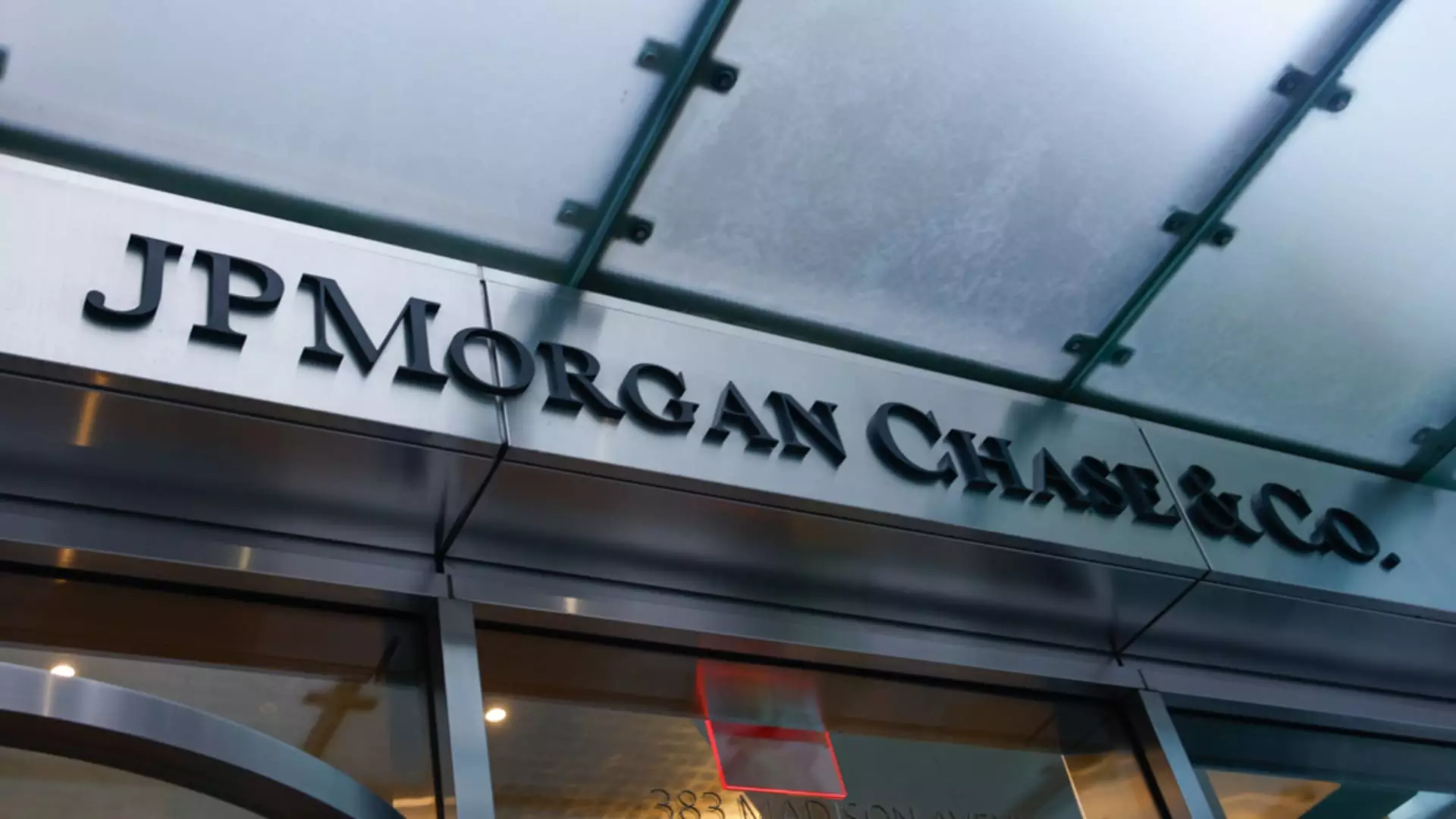The recent exuberance driving the shares of banking giants JPMorgan Chase and Bank of America has drawn considerable excitement from investors. Yet, this enthusiasm seems to overlook a fundamental concern: valuation metrics have reached historically lofty levels that threaten future returns. JPMorgan, often lauded as the gold standard of American banking, is now trading at nearly three times its tangible book value—a rarefied altitude that naturally tempers expectations for continued gains. Simply put, paying a premium for “best-in-class” status may not justify the potential rewards ahead. The danger is clear—investors are buying growth at a valuation premium so high that the downside risk is no longer negligible.
Risk-Reward Dynamics Demand Prudence
Analyst David George’s recent decision to downgrade JPMorgan to an “underperform” rating is a refreshing anchor of sober analysis amid market zeal. While many cheer regulatory rollbacks, solid capital strength, and renewed capital markets activity, these positives are arguably priced in, leaving little margin for error. JPMorgan’s forward price-to-earnings ratio now stands at 15.5, signaling a market that may have gotten carried away. This disconnect between price and realistic future earnings growth creates an “unattractive” risk-return profile—a caution investors would be wise to heed.
Bank of America’s outlook appears somewhat less frothy but still fraught with tension between fair value and expectations. Rated “neutral,” BofA’s stock appears to have largely baked in anticipated earnings improvements, especially from net interest margin expansion. Its forward P/E ratio near 13.1 suggests a comparatively balanced but still modestly stretched opportunity. In a market prone to volatile sentiment shifts, “fair value” is no guarantee of stability.
The Illusion of Mega-Cap Immunity
The mega-cap banks have been bastions of stability during many market cycles, rightly earning respect for conservative balance sheets and diversified revenue sources. However, the assumption that these titans are immune to valuation bubbles or sectorwide corrections is dangerous hubris. JPMorgan and Bank of America’s year-to-date outperformance—20% and 8% respectively versus a 4% S&P 500 rise—reflects momentum-driven flows rather than pure fundamental innovation. Once valuations begin to matter again, these leaders risk sudden repricing.
There is also the tacit belief among many investors that deregulation and capital market reopenings will perpetually fuel higher profits. While these factors help, they do not guarantee indefinitely rising share prices. We must remember that the banking industry remains heavily influenced by cyclical economic factors outside its control—interest rate shifts, geopolitical tensions, and regulatory reversals could all swiftly alter the trajectory.
Wall Street Sentiment Versus Ground Reality
The majority of Wall Street analysts remain bullish on both banks, with roughly half rating JPMorgan as a strong buy or buy and an even larger majority favoring Bank of America. This consensus optimism reflects a broader market pattern of momentum chasing and the comfort of mega-cap reputations. Yet, the divergence between analyst ratings and critical valuation assessments showcases an uncomfortable truth—the market is willing to overlook risk in favor of perceived safety and growth narratives.
It is worth questioning if this prolonged consensus is a rational response or a herd mentality waiting for a catalyst to justify skepticism. The tension between entrenched bullish sentiment and pragmatic valuation analysis suggests that investors should temper their enthusiasm with a dose of realism.
Why Conservative Investors Should Reconsider
For those subscribing to a center-right, economically liberal perspective that values free markets but respects prudent risk management, the current situation in mega-cap banking stocks is a cautionary tale. Blind optimism fueled by deregulation and capital market rebounds risks encouraging complacency at the top of the cycle. Valuations have become the elephant in the room—ignored but impossible to dismiss indefinitely.
A disciplined investment approach demands recognizing that even the best franchises cannot escape the laws of valuation and economic cycles. The time to appreciate the high risks embedded in JPMorgan and Bank of America’s extended pricing is now—not after irreversible portfolio damage. Investors who appreciate market fundamentals and sound fiscal prudence might well benefit from redirecting capital to less overheated areas until valuations realign with reality.

